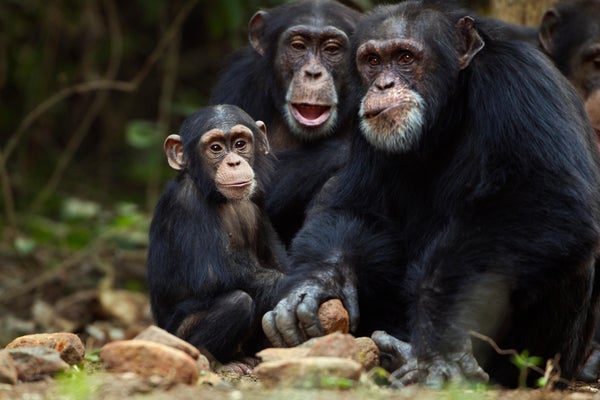Scientists Thought Only Humans Learn Complex Behaviors from Others. They Were Wrong
New studies in bees and chimps challenge the long-held assumption that only humans can learn from innovative peers
Western chimpanzees cracking open nuts on stones in the Mount Nimba Strict Nature Reserve, Guinea.
Nature Picture Library/Alamy Stock Photo
The movie 2001: A Space Odyssey famously opens with an ancient apelike human ancestor suddenly realizing that he could use large bones as weapons. Others in his group who see him quickly adopt the novel skill, leading to a frenzy of weapon wielding that the movie implies sparks all of human innovation and accomplishment.
For decades, most researchers assumed that humans were the only ones who were capable of learning new breakthrough behaviors from innovative members of their species, facilitating cultural evolution and biological success. Plenty of nonhuman species are known to learn new behaviors from other members of their group, but many researchers thought that this was restricted to behaviors that most individuals could have figured out on their own—thus putting inherent limitations on the extent to which these species’ cultures could evolve.
Now a pair of new studies contradict this idea by demonstrating that two very different species—chimpanzees and bumblebees—can learn complex behaviors by watching others.
On supporting science journalism
If you’re enjoying this article, consider supporting our award-winning journalism by subscribing. By purchasing a subscription you are helping to ensure the future of impactful stories about the discoveries and ideas shaping our world today.
“Obviously, in terms of breadth and depth, human culture is unrivaled, but the underlying capacity for it is clearly not unique, exclusive or even rare,” says Alice Bridges, a biologist at the University of Sheffield in England and lead author of the bumblebee paper, which was published in Nature on Wednesday. “This…
Read the full article here







